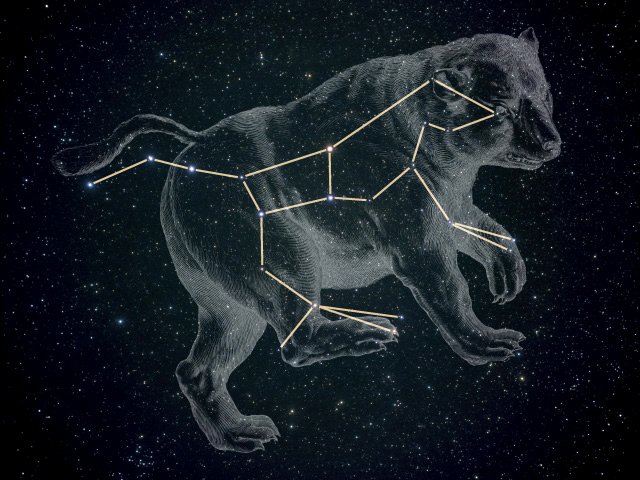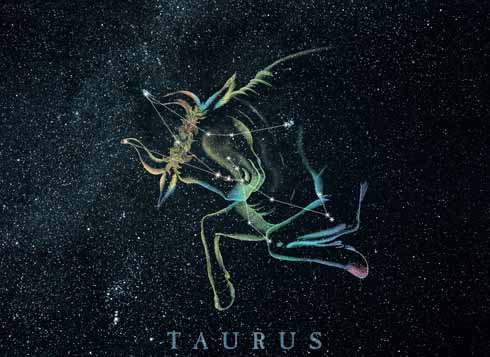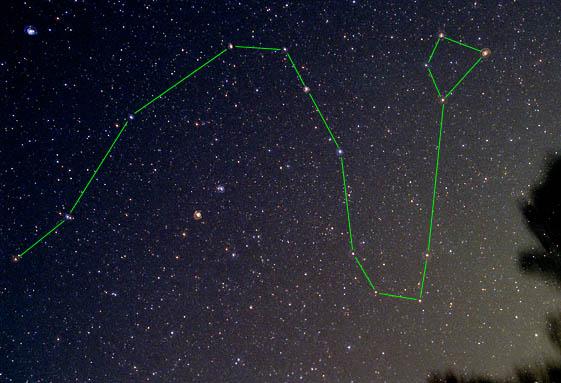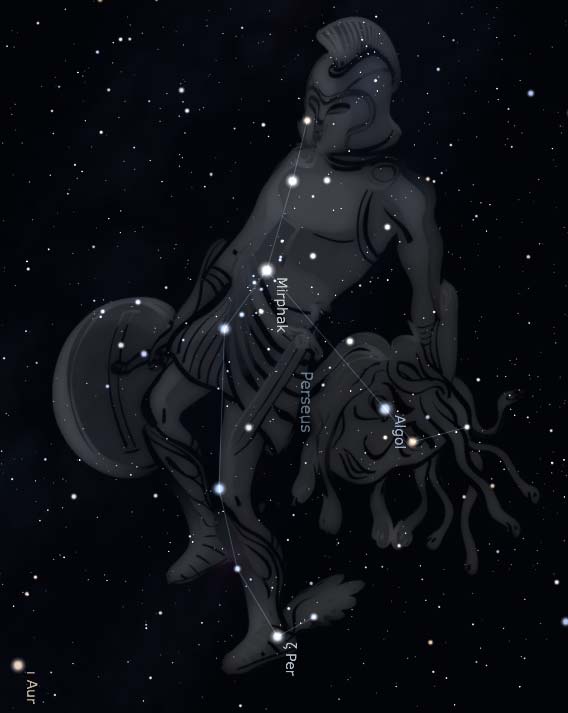Constellations and Mythology
The familiar constellations we see in the night sky are steeped with history and mythology. Cultures from across the world have always placed great importance in the night sky and this in turn inspired their myths, legends and stories. In this post we’ll explore some of the most interesting mythology surrounding the constellations.
- Ursa Major
Ursa Major is one of the most well known and most easily recognisable constellations in the night sky. The constellation’s name translates to the “great bear” in Latin. It is one of the most ancient constellations and it appears across world cultures in different legends, most often associated with a bear. The most prominent feature of the constellation is the asterism called “The Plough” or the “Big Dipper”. According to some myths in Native American cultures the bowl of the big dipper (or plough) represents a bear and the handle represents the warriors chasing it. This myth also states that the blood of the wounded bear causes the leaves to turn red – the constellation appears low in the sky during autumn.

- Taurus
Taurus is another ancient constellation. It is also one of the twelve symbols of the astrological zodiac and its name translates to the “bull”. It’s been suggested that this constellation has existed since at least the early bronze period (approximately 17,000 years ago!). Pictures of the constellation were found in the Lascaux cave paintings which were made in the year 15,000 BCE. In Babylonian mythology Taurus represents the “heavenly bull”. In the Epic of Gilgamesh this was the bull who was sent by the goddess Ishtar to kill Gilgamesh. Whereas in Greek mythology is it most often associated the god Zeus who transformed into the form of a bull.

- Pegasus
Pegasus is one of the 48 constellations which were named by the ancient Greek astronomer Ptolemy. In Greek mythology is represents the winged horse Pegasus – probably best known from the 1997 Disney film “Hercules” (even though, technically speaking, Hercules never rode Pegasus; that was Perseus). In one myth Pegasus used his hooves to dig out a spring called Hippocrene. This spring blessed all those who drank its water with the ability to write poetry. According to Greek mythology Pegasus was placed into the sky by the god Zeus.

- Hercules
The constellation is most often associated with the Roman hero Hercules – Hercules is the Roman version of the Greek mythology hero Heracles. The history of the constellation goes back further than this though and in Babylonian mythology the constellation is associated with the hero Gilgamesh.

- Draco
The constellation of Draco appears next to Hercules in the night sky and is most associated in mythology with Hercules. In Greek mythology Draco represents the dragon Ladon who was tasked with guarding the golden apples in the garden of Hesperides. As one of his twelve labours the Greek hero Heracles had to steal some of these apples, this resulted in Heracles killing the dragon. In other myths the constellation Draco is also said to represent one of the titans who fought the Olympian gods in Greek mythology.

- Leo
Leo is one of the most well-known constellations in the night sky, it represents one of the twelve zodiac signs. The constellation’s name translates to the “lion”. It appears across several world cultures and it is one of the oldest constellations and it has been suggested that the Mesopotamians had a constellation similar to Leo in the year 4,000 BC. It also appears in Babylonian mythology as the great lion, the Babylonians also referred to the star “Regulus” as “the star that stands at the Lion’s breast”. In Greek mythology it is most often associated with the myth of the Nemean Lion. The Nemean Lion was killed by the hero Heracles as part of his twelve labours. The Lion was impervious to any weaponry so Heracles was forced to fight it with his bare hands.

- Perseus
The constellation Perseus is said to be derived from the Babylonian “Old Man” constellation. It is most often associated however with hero Perseus from Greek mythology. The constellation is just one of the six constellations with are associated with the myth of Perseus. It is located next to the constellation Andromeda, which represents the wife of Perseus. Perseus was the son of Danaë and one of the most well-known myths was that he was sent by the King Polydectes to retrieve the head of Medusa the Gorgon.

